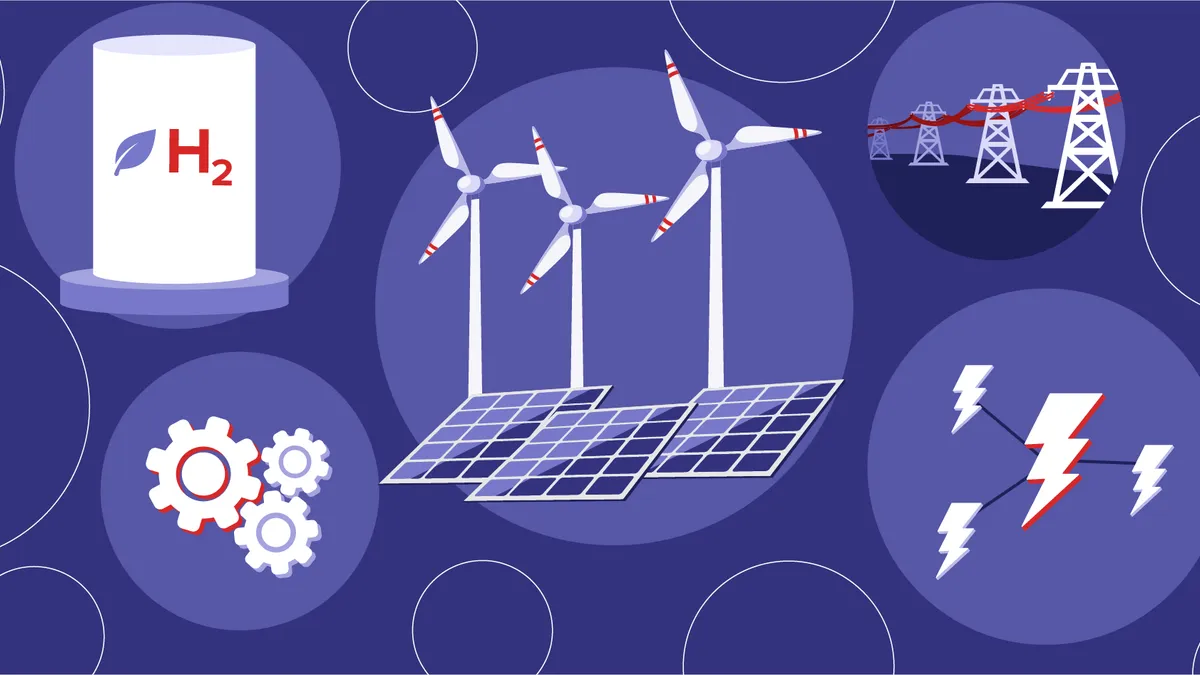Dive Brief:
- As utilities meet aggressive federal and state decarbonization targets, it will be incumbent on them to communicate and educate customers, executives from major U.S. utilities said at the BNEF Summit on Wednesday.
- "We've got to really advance what our customers see and hear, and what products they are able to utilize to affect their electricity consumption," said Steve Young, executive vice president and chief financial officer for Duke Energy. With electricity rates expected to rise as utilities install new renewable infrastructure, Young added that it will be important to communicate what that money is funding.
- Also key, panelists said, is cooperation amoing federal, state and local regulators to streamline approval and permitting for new transmission infrastructure to accommodate offshore wind and solar energy. "The higher the certainty we have of these projects getting done, the more we'll attract jobs and manufacturing" in the renewable sector, said Avangrid CEO Dennis Arriola.
Dive Insight:
The Biden administration has set a target for the nation to achieve 100% clean energy by 2035 and could announce an economy-wide 50% cut to emissions below a 2006 baseline by 2030.
A number of states have also set targets. California, for example, has a clean energy standard calling for 100% zero-carbon electricity by 2045. Last spring, Virginia Governor Ralph Northam signed a law that will require Dominion Energy Virginia to be 100% carbon-free by 2045 and Appalachian Power to be 100% carbon-free by 2050, an "aggressive" target that will force a rapid transformation of the grid, said Dominion chief operating officer Diane Leopold.
"We've been trying to make sure customer bills are at the forefront of those efforts, because electricity does need to be safe, affordable and reliable as well as clean," Leopold said on the BNEF panel.
She added that new technology like smart meters and carbon calculators have given customers "information behind the meter they are not used to having access to," making them more aware of the role the utility plays in their power. That can help educate consumers on the changes to the grid and their bills, as well as empower them to reduce demand and play their own role in fighting climate change.
On the supply side, executives emphasized that building storage and transmission projects to bring power to where it's needed can take years because of the complex permitting system. In order to meet the administration's goal to deploy 30 GW of offshore wind by 2030, all levels of government will have to work together, said Arriola, whose company operates in 24 states. "The biggest thing the federal government can do is coordinate with state governments," he said, noting that Avangrid's plan to build a 1,200-MW transmission line in Maine to deliver hydropower from Canada has taken more than five years.
Meeting clean energy goals will require new investments and experiments with technologies like small modular reactors and green hydrogen, which executives said would require government support and more investment from ratepayers. However, National Grid U.S. president Badar Khan said that utilities could communicate that those investments will pay off in the future.
"We may not see all of this come through on our energy bills," Khan said. "It may come through tax incentives or product rebates. There is a cost to carbon … and finding a way to address those costs across society by making investments in resiliency and infrastructure and decarbonizing is all worthwhile."














